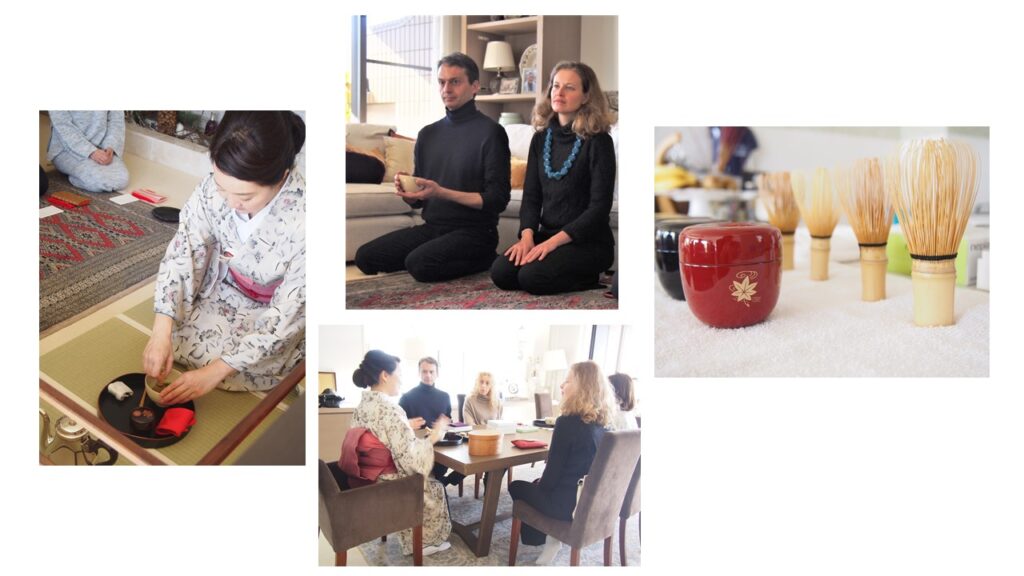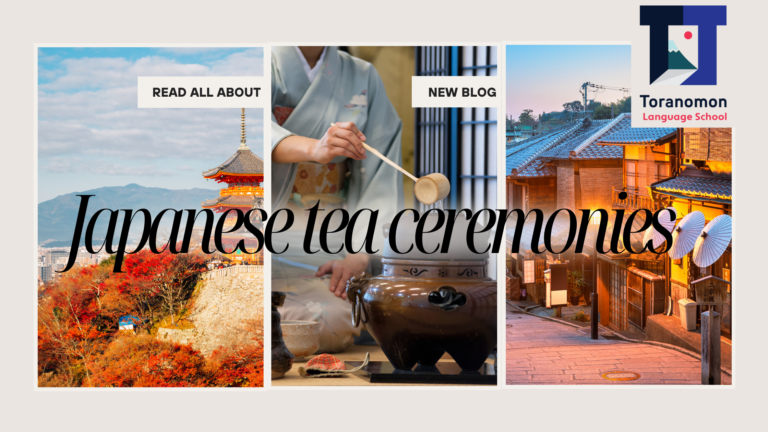
The Japanese tea ceremony, also known as “sado”, is a tradition rich in history. It is a process of preparing and drinking tea. Traditionally, these ceremonies are held on a tatami floor which is a thick, woven straw mat. The main purpose of attending these ceremonies is for guests to enjoy the hospitality and atmosphere provided for them that is much more relaxing than everyday life.
In modern times, these ceremonies are most commonly practiced as a hobby and are open for tourists to experience as well. Tea ceremonies vary in formality and authenticity, and Kyoto or Uji, about six hours outside of Tokyo, are two of the best places to travel to to enjoy a Japanese tea.
Tea ceremonies are commonly multiple hour events that begin with a kaiseki course meal, a traditional Japanese multi-course cuisine. Usually this is followed by a bowl of thick tea and ends with a bowl of much thinner tea. More modern ways are to only serve the bowl of thin tea, eliminating the thicker one.

The expectations for a tea ceremony for Japanese natives are very high with precise hand motions and specific details. For tourists, the standards are lower, although having a general idea of the ceremony and the rules is greatly appreciated and will also make the process easier for you.
If you are new to Japan and Japanese culture, here are some pieces of knowledge that may soothe your mind about attending a tea ceremony.
When deciding on an outfit, it is best to wear something that is modest and avoid wearing strong perfumes. Shoes are not allowed in the spaces where the ceremony is held, so wear clean socks. This will show respect and also protect the mats you will be standing and sitting on. Loose, neutrally colored clothing is recommended to keep the focus on the tea.

The traditional venues are often surrounded by a garden although many newer locations lack a garden. The gardens are purposely kept simple and thought to encourage calming spirits. Flowers that have deep scents or extravagant coloring are avoided to prevent distractions. Stones varying in shapes and sizes will create a pathway leading up to the teahouse and often a lantern is placed near the entrance where visitors may wash their hands before entering.

When entering the room, guests will sometimes have to bend over due to the low entrance. This is to symbolize humility. After the bow the guests make their way into the room where the are greeted with decorations including seasonal flowers inside of an alcove.
Japanese tea ceremonies are a beautiful tradition that should be enjoyed and experienced by all! In the past at Toranomon Language School, we had the privilege of hosting a tea ceremony of our own instructed by the most renowned Sado teacher, Machiko Hoshina. It’s events like this that bring our students closer to Japanese culture and furthering their interest in the Japanese language.

Ready to dive deeper into Japanese culture and learn the language, enroll in our intensive Japanese courses where we prioritize your learning in an environment that is enjoyable and comfortable. Join us in our one month course to accelerate your learning and understand essential Japanese culture and language. Currently we
Our adult private Japanese classes are offered for all levels. We provide high-quality and flexible courses focused on your goals, accelerating your learning with a wide range of content adjusted for your learning needs.
For kids we offer summer courses at Toranomon Language School. Classes are offered Monday through Thursday where the kids participate in traditional classroom activities. On Fridays, the “Walk and Learn” programs are held where kids can go out into the city of Tokyo and stop at places such as Tokyo Tower or local convenience stores immersing themselves in the culture.



